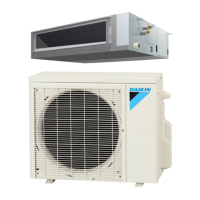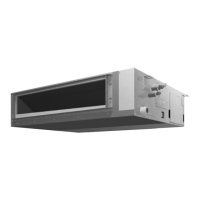Common Functions SiUS091601EA
45 Part 4 Functions and Control
When the frequency increases, the rotation speed of the compressor increases resulting in an
increase of refrigerant circulation. This leads to a larger amount of heat exchange per unit.
When the frequency decreases, the rotation speed of the compressor decreases resulting in a
decrease of refrigerant circulation. This leads to a smaller amount of heat exchange per unit.
The following drawing shows a schematic view of the inverter principle:
Inverter Features The inverter provides the following features:
The regulating capacity can be changed according to the changes in the outdoor temperature
and cooling/heating load.
Quick heating and quick cooling
The rotation speed of the compressor is increased when starting the heating (cooling).
This enables to reach the set temperature quickly.
Even during extreme cold weather, high capacity is achieved. It is maintained even when the
outdoor temperature is 2C (35.6°F).
Comfortable air conditioning
A fine adjustment is integrated to keep the room temperature constant.
Energy saving heating and cooling
Once the set temperature is reached, the energy saving operation enables to maintain the room
temperature at low power.
Frequency Limits The following functions regulate maximum frequency:
Low frequency
Four way valve operation compensation. Refer to page 81.
High frequency
Compressor protection function. Refer to page 81.
Discharge pipe temperature control. Refer to page 82.
Input current control. Refer to page 83.
Freeze-up protection control. Refer to page 84.
Heating peak-cut control. Refer to page 84.
Defrost control. Refer to page 86.
Forced Cooling
Operation
Refer to page 199 for details.
Refrigerant circulation rate (high)
high f
low f
freq=variable
Refrigerant circulation rate (low)
high speed
low speed
(R2812)
Amount of heat
exchanged air (large)
freq=
constant
50 Hz 50 Hz
60 Hz60 Hz
capacity=
variable
Amount of heat
exchanged air (small)
AC
power
DC
power
Amount of heat exchanged air
(large)
Amount of heat exchanged air
(small)

